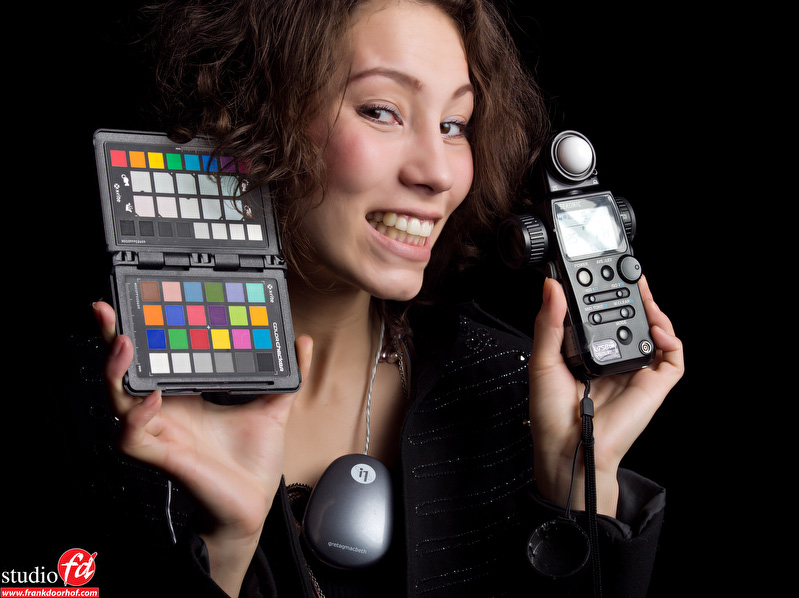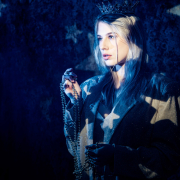A topic on the light meter
I recently put a topic on social media and got so many good responses that I thought it also needed a place on the blog. Now let me make one thing 100% clear before starting this topic. The light-meter is a tool, it’s nothing less and nothing more. If you don’t use a light-meter you’re not a bad person, you are without any doubt not a lesser photographer than someone who is using it, I think that from all “photographers” out there now a days less than 1% is using a light meter, from the pros this percentage will be a little bit higher and as you know those people can create stunning images.

I for one however strongly believe that someone that is into photography should at least look at the light meter to see what it does and how it operates, because if you use one, one thing is for sure it WILL speed up your workflow considerably and also helps you to create the same quality of exposure over and over again.
Now in the past I’ve written a lot on the subject and I still believe that there are areas that I did not touch (so who knows what you will see more in the future), during my workshops and talks to photographers I find that the group using a meter is very very small, when I talk about the reasons I often get the same responses “You don’t need it with digital right?” and that’s ok, with digital you can indeed judge an image on the “instant polaroid” on the back of your camera or on your screen. However I also get responses like “I use the histogram”, “I always thought meters were only for the landscape guys”, “I was told that the meter was inaccurate and that with digital you could nail the exposure so much better”…..
I’m not sponsored by Sekonic (and trust me I tried :D) but somehow the whole light meter thing did got me thinking and I decided a few years ago during PSW to do a class on why I use a meter with stunning results (I believe they sold out the meters in a few hours) ever since it’s been a solid part of what I teach.
As an instructor I think it’s very important to realize the influence you have on people, I know for sure that if some people tell you that you really need product X people will not even think about it and get product X, but also if some people tell you that a light meter is not necessary and present this with flair and loads of information that people don’t even think about it anymore and just plain believe it and therefor never look at the meter again.
The internet is a haven for information and most of it is for free, as a viewer please beware of this, everyone can post a video, there is no truth police or commission that judges every video for it’s content. Of course it’s incredibly cool that someone takes the time to tell you about his/her experiences and that should be applauded, however when it comes to learning people material I strongly believe that one should tell the truth (fact checking) or just don’t talk about the subject.
So let’s post some topics that often are puzzling people next to each other.
1. The incident meter meters 18% gray, so what’s the use for model photography?
This you hear a lot.
A meter often has 2 options, incident and reflective.
Incident is what you use when you meter a model, just hold the meter as close as possible to your subject and meter, set the camera on the values you get and you’re done.
Reflective is somewhat more confusing for people, but in essence it’s how your camera works, it will meter the area you point it towards and give you the value for 18% gray, with this information you can very quickly calculate if you are seeing detail in blacks or whites, or how much to over/under expose to get an area black or pure white.
My personal preference is a meter that can do both and has a 1 degree spot.
2. Use the histogram
No, No, and again No.
The histogram only shows you the distribution of tonal values, it is in no way a tool to get an accurate exposure, it CAN help you to prevent blowing out highlights if you keep in mind that the histogram is not based on the RAW file in 99% of the cases but on the JPEG tumbnail, meaning if you set your brightness or contrast in camera it will influence the histogram.
The other reason it will never work is for the simple fact that you don’t know the values of someones skin so it’s impossible to get an accurate exposure this way for skin or any other subject.
3. A meter is expensive
It depends, I know people that spend more on a lens or even memory cards than the average meter cost.
The meter however will survive most of your hardware upgrades, a meter is bought for life, a camera… well for a few years.
4. A meter is hard to operate
Well as long as you can point your lens to someone and press the shutter……
It’s not much harder, point the meter and press the button, use the values to get proper exposure.
With many things people just overthink the whole operation of the meter, or are made afraid by what they read online, yes there are MANY options you can also do with the meter, but in essence it’s really as simple as point, click and get the reading.
So a few pointers to use the meter, to make it easier
1. Point towards?
Most asked question, but very simple to answer.
Point towards the light source that is hitting the area of your subject you want to be properly exposed.
In other words if you’re shooting outside and the sun is behind your model and you want the sun to be the accent light and the right side of the face of the model correct, hold the meter in front of the right side of her/his face and point forward (not towards the camera, just forward), use that setting and you have the perfect exposure where you want it. If you’re not satisfied with that result it’s not the fault of the meter… it’s probably necessary to flag off some area that are overexposed or meter somewhere else and use fill in flash, this can be very easily done with for example the spot meter, but that’s a bit more advanced for this post (see the menu on this blog called light meter for more info on that subject and much more).
In the studio, or when working with strobes, it means in 99% of the cases you will meter towards the light source.
2. Close to your subject REALLY close
Meter as close as possible to your subject as possible. The inverse square law dictates that light falls off over distance, meaning if you meter in front of your model you will get an inaccurate reading.
3. Read the extra number
Most meters are set up to work in 1/10 stops, so when reading F11.3 it actually means that the light is brighter than F11 actually 3/10s more bright.
The cameras work in 1/3rd stops so in essence F11.3 means F11 and one click extra on the camera, F11.6 means another click.
With most strobes you can fine tune in 1/10th stops so you can make spot on exposures.
4. Calibrate the meter
If the meter under (or overexposes) consistently first test it with a VERY flat light source to make sure everything is working correctly and your metering technique is ok. If that’s the case it’s not uncommon that there is a difference between your camera and the meter, for example the SLT cameras from Sony take away app 1/3rd stop of light. You can very easily correct this in the meter. You can use the supplied software in the case of some meters, or just shoot an 18% gray card and make sure the numbers in the histogram are around 128.128.128.
5. Meter correctly
When using grids etc. make sure you meter on eye level (or the area you want correct) and aim correctly, grids often fall off very rapidly and when metering under the chin it can happen you are actually getting a wrong reading, don’t blame the meter but check if the area you metered is correct… often you will see that it’s not the meter but that your light is setup the wrong way (for example a blown out forehead but correct chin. Your meter did a good job 🙂
Working with a meter is not for old people, it is and always will be cool for the simple reason it speeds up your workflow and doesn’t make you look like someone who doesn’t know what he is doing in front of your client when you are trying to figure out how to setup your lights.





A question about number 3 – lets say you take an ambient light reading and it says 11.1 or 11.2, does it mean that f11 will give me correct exposure or is that also 1 click brighter than f11?
11.0 = F11
11.1 = 1/10th from F11
11.2 = 2/10th from F11
11.3 = 3/10th from F11 so that’s the next click on the camera.
11.4 = 4/10th from F11
11.5 = 5/10th from F11
11.6 = 6/10th from F11 so that’s the next click on the camera.
Inverse square law – now that should be a nod to Zack 😉
It would be great if you collected all your knowledge and practice about lightmeters and calibration into a video or manual. Sekonic is missing a trick not acknowledging you, Frank!
Great post Frank, I use a light-meter all the time gives me a quick start and I can meter the ratio better.
3. The extra numbers in a table